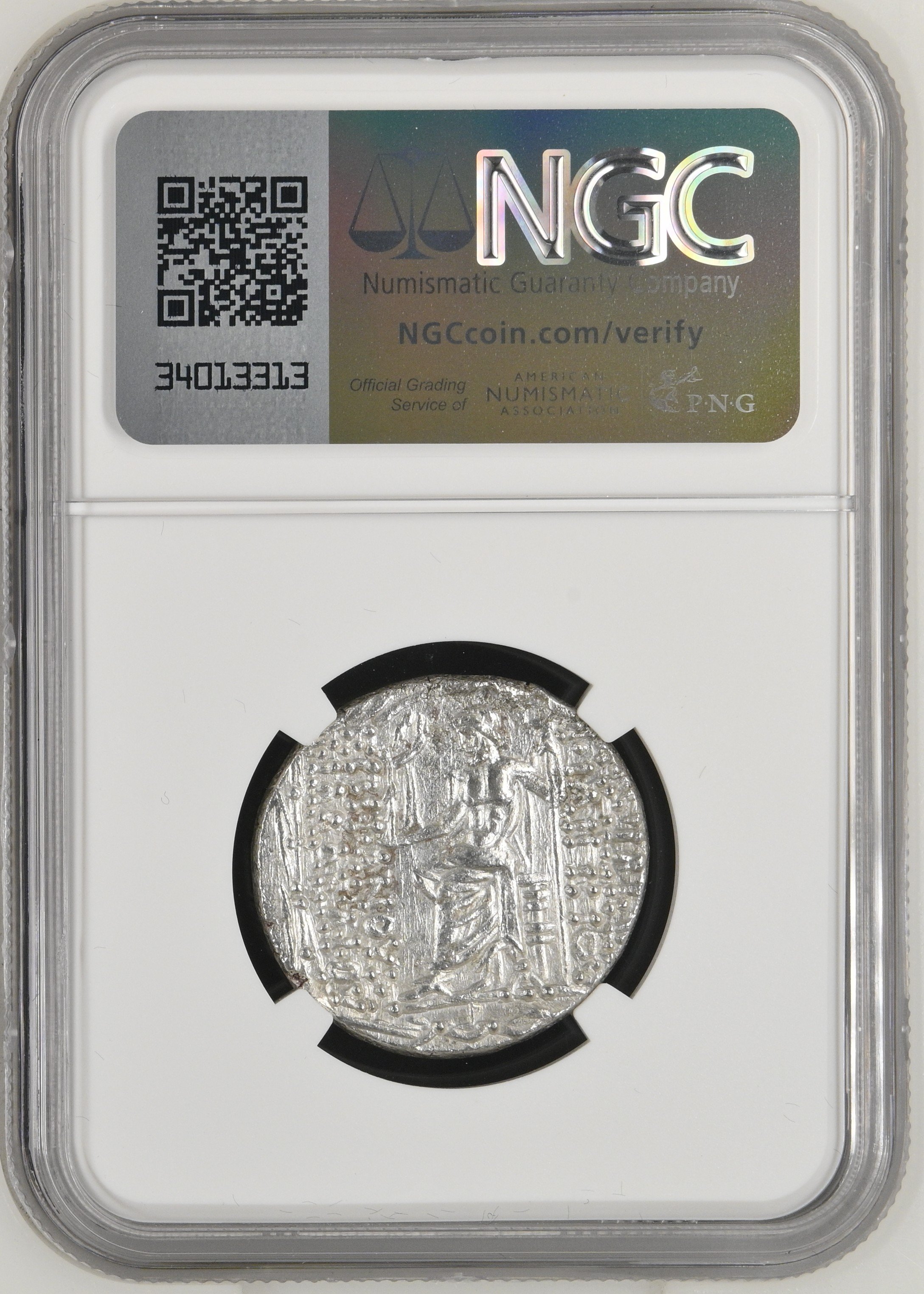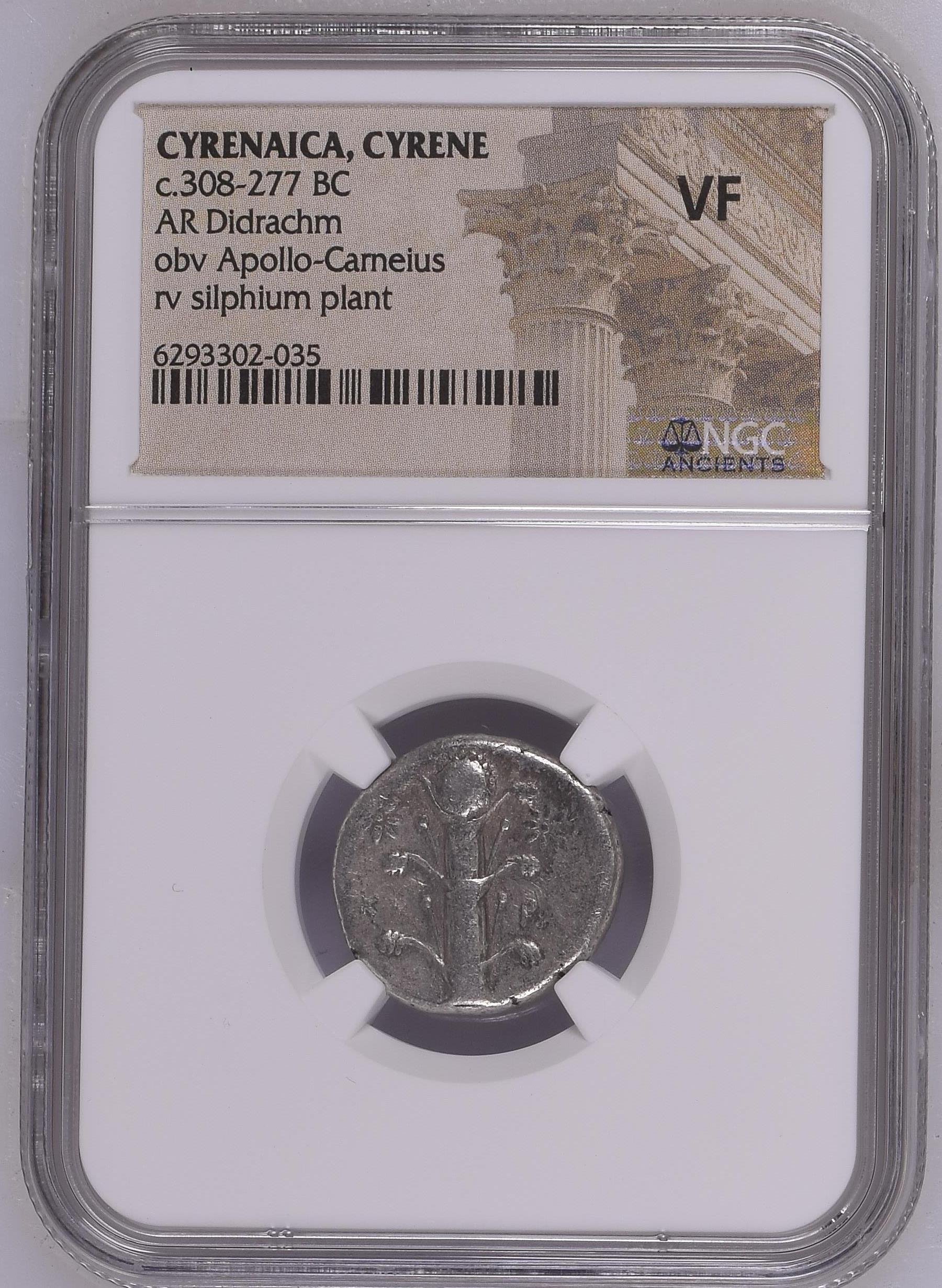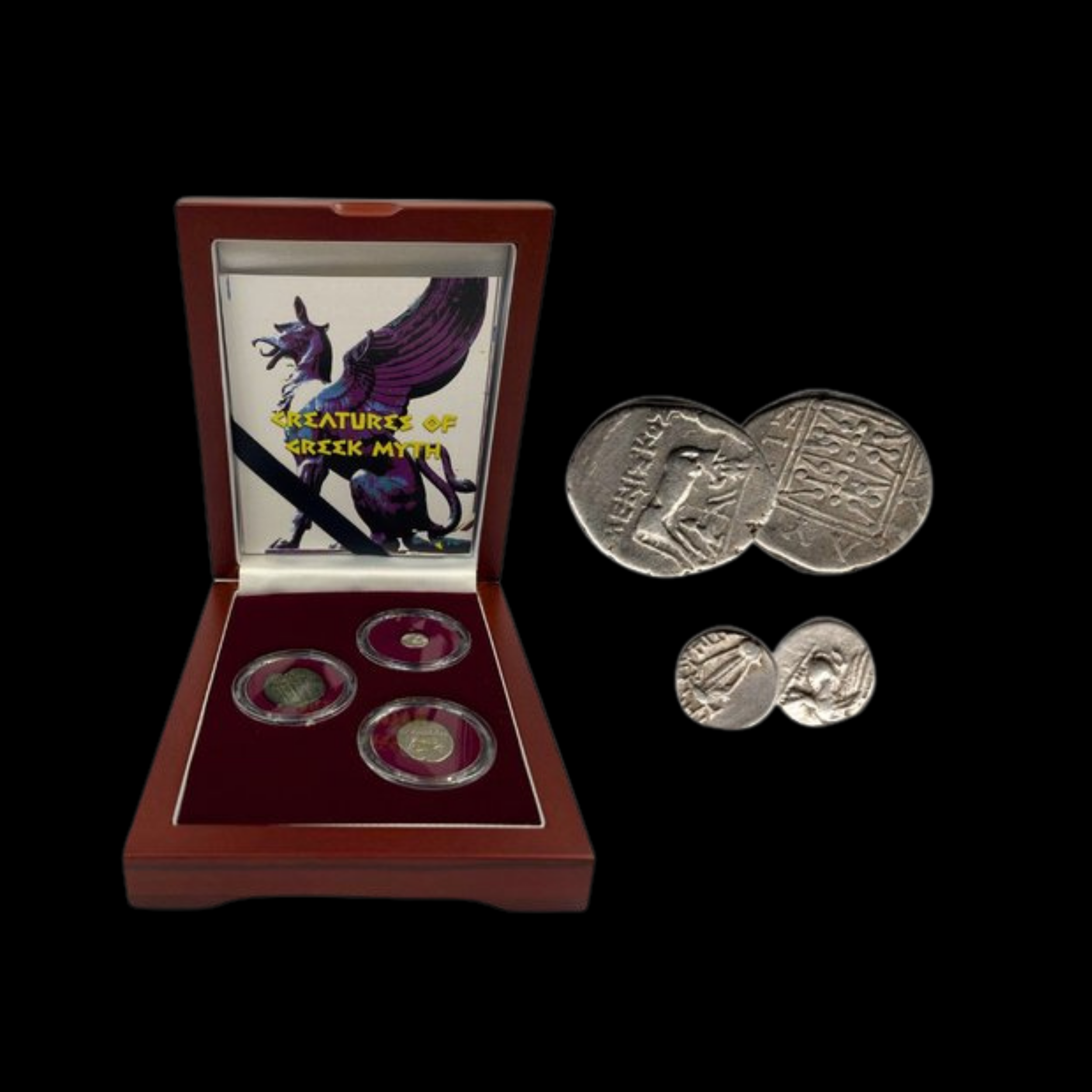 Image 1 of 2
Image 1 of 2

 Image 2 of 2
Image 2 of 2



Silver Didrachm from Cyrene (about 2,300 years ago)
This coin is a silver didrachm from the ancient Greek colony of Cyrene in North Africa (modern-day Libya). Minted between 308-277 BCE during the rule of the Ptolemaic dynasty, this didrachm represents an important piece of currency from one of antiquity's most prosperous trading centers. The coin features religious imagery significant to the region's cultural identity and economic prosperity.
Coin Description:
Front side: The obverse depicts the head of Apollo-Carneius, shown with curled hair and adorned with a wreath. Apollo-Carneius was a special form of Apollo particularly revered in Cyrene.
Back side: The reverse features a silphium plant, which was Cyrene's most valuable export and appears as the city's emblem on many of its coins. The plant is shown with its characteristic stalk, leaves, and flowering head.
Technical Details:
Silver composition (abbreviated as AR, from Latin "argentum" meaning silver)
Didrachm denomination (equal to two drachms in the Greek monetary system)
Weight: Approximately 7-8 grams (standard for Cyrenaican didrachms of this period)
Size: Approximately 20-22mm in diameter
NGC Grade: VF (Very Fine) - indicating good detail preservation with moderate wear from circulation
Date of minting: 308-277 BCE (during early Ptolemaic control of the region)
Historical Significance: This coin was minted during a pivotal period when Cyrene came under the control of the Ptolemaic dynasty of Egypt following Alexander the Great's death. The silphium plant depicted on the reverse was a now-extinct medicinal herb that grew only in the region around Cyrene (eastern Libya today) and was so valuable it became the foundation of the city's enormous wealth. The plant was used for seasoning, medicine, and as a contraceptive in the ancient world. So precious was silphium that coins from Cyrene almost always featured it as a symbol of the city's identity and prosperity. This didrachm would have been a significant denomination in daily commerce, roughly equivalent to two days' wages for a skilled laborer in the ancient world.
This coin is a silver didrachm from the ancient Greek colony of Cyrene in North Africa (modern-day Libya). Minted between 308-277 BCE during the rule of the Ptolemaic dynasty, this didrachm represents an important piece of currency from one of antiquity's most prosperous trading centers. The coin features religious imagery significant to the region's cultural identity and economic prosperity.
Coin Description:
Front side: The obverse depicts the head of Apollo-Carneius, shown with curled hair and adorned with a wreath. Apollo-Carneius was a special form of Apollo particularly revered in Cyrene.
Back side: The reverse features a silphium plant, which was Cyrene's most valuable export and appears as the city's emblem on many of its coins. The plant is shown with its characteristic stalk, leaves, and flowering head.
Technical Details:
Silver composition (abbreviated as AR, from Latin "argentum" meaning silver)
Didrachm denomination (equal to two drachms in the Greek monetary system)
Weight: Approximately 7-8 grams (standard for Cyrenaican didrachms of this period)
Size: Approximately 20-22mm in diameter
NGC Grade: VF (Very Fine) - indicating good detail preservation with moderate wear from circulation
Date of minting: 308-277 BCE (during early Ptolemaic control of the region)
Historical Significance: This coin was minted during a pivotal period when Cyrene came under the control of the Ptolemaic dynasty of Egypt following Alexander the Great's death. The silphium plant depicted on the reverse was a now-extinct medicinal herb that grew only in the region around Cyrene (eastern Libya today) and was so valuable it became the foundation of the city's enormous wealth. The plant was used for seasoning, medicine, and as a contraceptive in the ancient world. So precious was silphium that coins from Cyrene almost always featured it as a symbol of the city's identity and prosperity. This didrachm would have been a significant denomination in daily commerce, roughly equivalent to two days' wages for a skilled laborer in the ancient world.
This coin is a silver didrachm from the ancient Greek colony of Cyrene in North Africa (modern-day Libya). Minted between 308-277 BCE during the rule of the Ptolemaic dynasty, this didrachm represents an important piece of currency from one of antiquity's most prosperous trading centers. The coin features religious imagery significant to the region's cultural identity and economic prosperity.
Coin Description:
Front side: The obverse depicts the head of Apollo-Carneius, shown with curled hair and adorned with a wreath. Apollo-Carneius was a special form of Apollo particularly revered in Cyrene.
Back side: The reverse features a silphium plant, which was Cyrene's most valuable export and appears as the city's emblem on many of its coins. The plant is shown with its characteristic stalk, leaves, and flowering head.
Technical Details:
Silver composition (abbreviated as AR, from Latin "argentum" meaning silver)
Didrachm denomination (equal to two drachms in the Greek monetary system)
Weight: Approximately 7-8 grams (standard for Cyrenaican didrachms of this period)
Size: Approximately 20-22mm in diameter
NGC Grade: VF (Very Fine) - indicating good detail preservation with moderate wear from circulation
Date of minting: 308-277 BCE (during early Ptolemaic control of the region)
Historical Significance: This coin was minted during a pivotal period when Cyrene came under the control of the Ptolemaic dynasty of Egypt following Alexander the Great's death. The silphium plant depicted on the reverse was a now-extinct medicinal herb that grew only in the region around Cyrene (eastern Libya today) and was so valuable it became the foundation of the city's enormous wealth. The plant was used for seasoning, medicine, and as a contraceptive in the ancient world. So precious was silphium that coins from Cyrene almost always featured it as a symbol of the city's identity and prosperity. This didrachm would have been a significant denomination in daily commerce, roughly equivalent to two days' wages for a skilled laborer in the ancient world.
You Might Also Like








